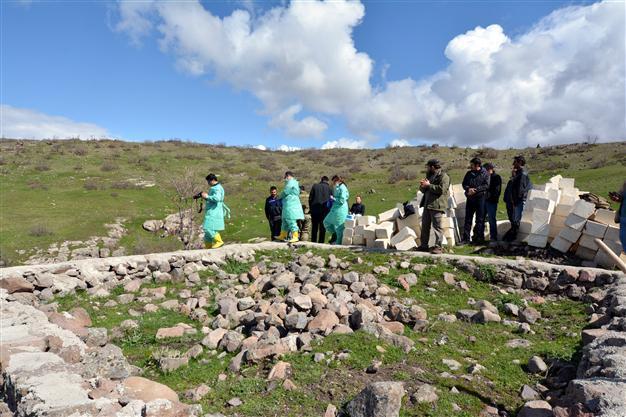Bones of possible Dersim massacre victims to be tested
TUNCELİ – Doğan News Agency

AA Photo
Human bone fragments found during an excavation conducted in a rural zone in the eastern province of Tunceli will be tested to determine whether they are the remains of 24 people who were killed in Dersim in 1938.A local court decided to start excavations in the Karabayır village of Tunceli’s Hozat district to determine whether 24 people from the Canan and Baran families were buried there in a mass grave, as claimed by their relatives.
The excavation, led by Hozat Public Prosecutor Hasan Toy, has been conducted by two experts from the Istanbul Forensic Medicine Insititute, a judiciary anthropologist and forensic specialist, a crime scene investigation team from the command post in Hozat and is being monitored by Kocaeli University Forensic Medicine Department head Ümit Biçer and Doctor Semih Yıldırım, who specialized on forensic medicine.
The Forensic Medicine Institute will conduct a number of tests to determine the age of the bones, which were discovered 20 centimeters beneath the ground, who they belonged to and how long they have been underground.
Samples will be collected from the families of the victims to determine whether they match with the DNA of the bones after the excavation is completed.
Cihan Söylemez, the lawyer of the Canan and Baran families, said the excavation was being conducted properly within the terms of the Minnesota Protocol.
“Human bones came out one after another. They are filtered out because they are too small. Every piece of bone has been numbered, “Söylemez said, adding the work could last a few days because the bone fragments were being examined very carefully.
If the DNA samples match, the remains will be delivered to the families for burial, Söylemez said.
Members of the Baran and Canan families claim 24 of their ancestors, including women and children, were taken from the Karabakır village on Aug. 14, 1938, and executed at the Saka Sure neighborhood by military personnel.
















